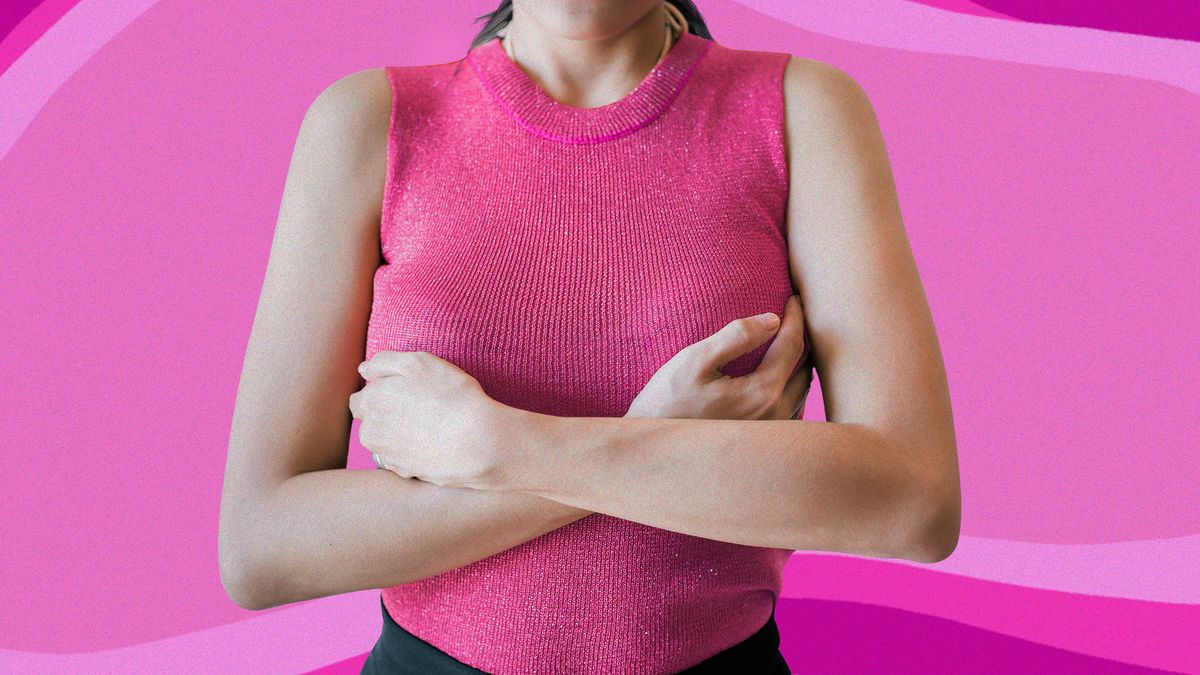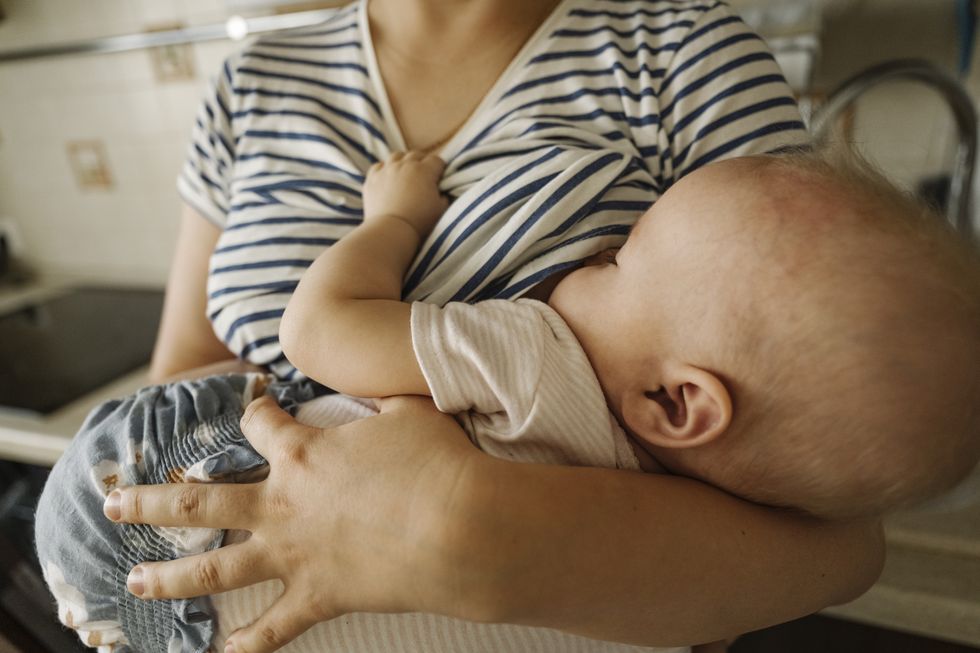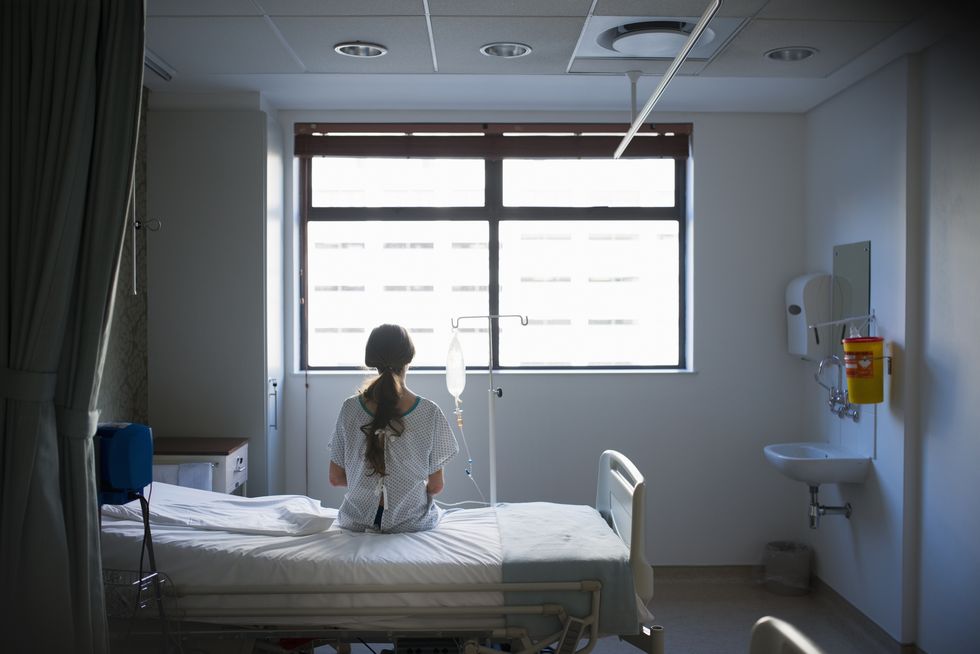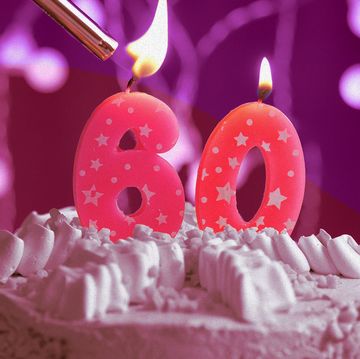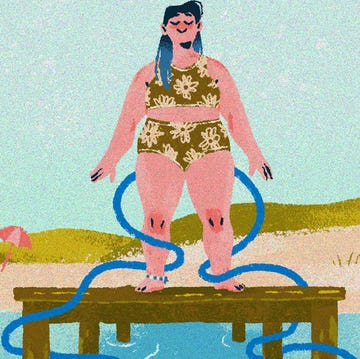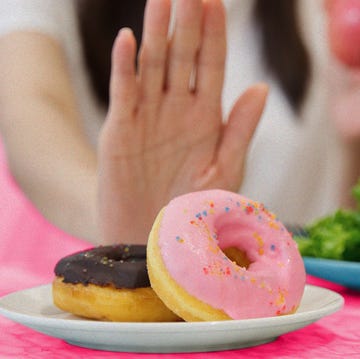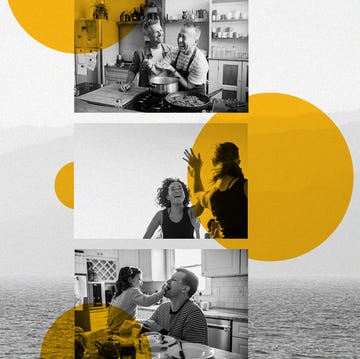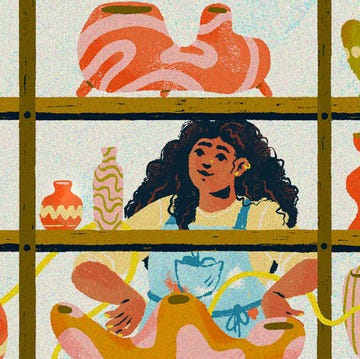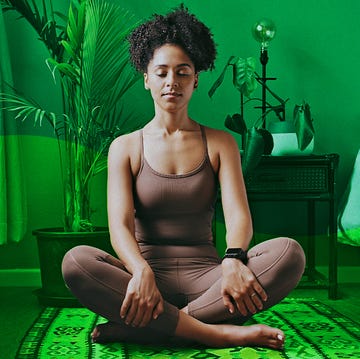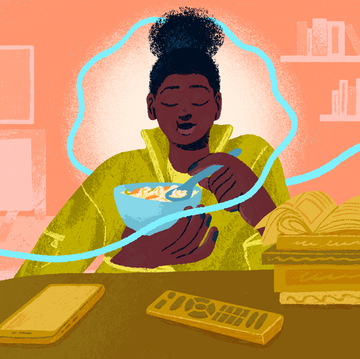After Thanksgiving dinner, I retreated to my room to nurse my youngest. She would be 2 years old in a month, and I was in no hurry to wean her, both because I was 44 years old, so she was sure to be my last child, and because nursing my babies always provided me a reasonable excuse to escape from gatherings for a moment of peace.
It was then that I noticed the pea-sized bump on my right breast. My toddler had taken to rhythmically tapping on me as she ate. As I studied her hand, I saw the protrusion next to her pudgy index finger. I massaged the painless spot, figuring it was just another clogged duct in need of clearing up. After nursing six children, I’d dealt with those pesky things from time to time, and I was in no mood to develop an infection.
After a day or so of the usual tricks, there was no change. I noticed that I could scoot the lump around under the skin with ease, unlike any clog I’d ever had before. I still didn’t think much of it. Perhaps it was another caffeine-induced spot? I’ve had those before as well. I made an appointment with my OB-GYN, and she referred me for some imaging, just to be safe.
Because I was still lactating, I was first given an ultrasound. The tech apologized for the coldness of the gel because I was the first patient of the day and the warmer had yet to heat up. I was a bit jittery but still not totally concerned. After all, there was no history of breast cancer in my family. I had no worrying symptoms. Generally speaking, I’m a healthy person.
Then, the radiologist came in. She said she wanted a better look, and despite my breastfeeding, she wanted a mammogram. I’d done them before in preparation for a breast reduction and once when I had another, non-worrisome bump. But it had been several years since then because I’d been either pregnant or nursing. The chilliness in that room made the ultrasound gel seem like a fleece blanket. Once again, the tech apologized as I shivered from the cold — but also from the newfound nerves that came with the radiologist’s worries. She hadn’t dismissed the image out of hand, and said that what she witnessed warranted a needle biopsy.
The following week, my husband and I arrived at the breast cancer center early in the morning. It was covered in Christmas decorations. In the corner, stood a pink tinsel tree adorned with pink ribbons. I hated it. I wondered how cancer patients felt about the twee nod to their disease. At that point, I was still thinking I couldn’t possibly have cancer. The needle biopsy was quick and relatively painless, save for the pinch of the anesthetic. The radiologist patted my hand and told me she’d call me in two days: my birthday.
While the doctor was confident it wasn’t cancer based on the needle extractions, she still wanted the mass removed. My birthday wasn’t ruined, but that pea of a lump in my breast turned into a ticking little time bomb in my head. When I first saw the surgeon a few days before Christmas, the ticking became louder in my brain. She wasn’t nearly as confident that I was cancer free, and I needed surgery to have the lump removed as soon as possible.
The day of my surgery, a guide wire was placed in order to assist the team in accurately targeting the lump, which I affectionately began referring to as the little asshole who ruined my Christmas. Because of the impending surgery, I was told that I would need to immediately wean. I tried to take selfies of the last time I used my breasts to feed my sweet baby, but they were all either unattractive, inadvertently explicit, or merely the side of her curly head. Instead, I attempted to commit the moment to memory. When I try to recall it now, I only remember the frustration and anger at being forced to stop on someone else’s timeline — both for me and my daughter.
I assumed that the doctor struggling to force the guide wire through my lump meant that it was malignant. She wouldn’t say, of course, but her questions turned from pleasant curiosities to pointed inquiries about my plans for treatment should the diagnosis be cancer. I asked for Valium. More than 10 days went by without any word from my surgeon. According to my Googling, pathology takes longer for malignancy — and rightly so. She warned me that my pathology report would likely reach me via email first, but she would call as soon as she had it. I received the email around 10 p.m. on a Monday night.
Ductal Carcinoma in Situ. Stage 0 Breast Cancer.
The carcinoma stood out. I knew that meant cancer. As my brain began to feel heavy and my limbs warm, I matter-of-factly told my husband what I’d known all along I would do if this happened to me: My breasts were done for. They served their purpose, and now they’d overstayed their welcome.
Stage 0 breast cancer is definitely still cancer. While I felt foolish saying I had cancer, I also was well aware due to my imminent double mastectomy that I was absolutely a cancer patient. “I thought we all had stage 0 cancer?” a sweet friend said to me, trying to break the tension as I awkwardly detailed how my breasts would be removed and replaced with jiggly bags of silicone. To be honest, I’d never heard of stage 0 cancer either. I assumed it was on a scale of one to four, and that 0 meant a complete absence of cancer.
According to Dr. Stephanie Downs-Canner, a surgeon at Memorial Sloan Kettering Cancer Center in New York, there are several kinds of cancer that can be classified as stage 0. “This just tells us that the cancer hasn’t figured out yet how to spread,” she explains, “so for ductal carcinoma in situ (DCIS), your breasts have these ducts, and the cancer can’t yet leave.”
My cancer could have eventually metastasized, Downs-Canner suggests. As many as one in five needle biopsies show that DCIS has turned into stage 1 breast cancer, which means the cancer is located in the breast tissue and possibly in one or more nearby lymph nodes. Thankfully, my cancer hadn’t yet sorted out an exit path.
Today, the screening for DCIS has improved, and more cases are being identified. “It used to be that only about 2 percent of breast cancer diagnoses were stage 0. Now, it’s more like 20 percent,” Downs-Canner says. “Improvements in technology and advances in medicine mean finding cancer sooner.”
For me, the good news is that while I spent nearly a year dealing with this issue — testing, diagnosis, double mastectomy, rehabilitation, reconstruction surgery — this is not how I die. “The overall survival rate of DCIS is around 98 to 99 percent,” Downs-Canner says. “The reason it’s not 100 percent is because it can come back, and about half the time, it comes back as an invasive cancer. But your risk of recurrence is about 1 percent because you opted for the mastectomy.”
My breasts no longer exist, at least not on my person. They were sliced into sections and pored over by a team of pathologists looking for the slightest evidence of further disease. Every cell that had previously worked hard to manufacture life-sustaining nourishment for my six children had to be dissected in order for those same children to keep their mother with them. It’s a price I was more than willing to pay but a costly one nonetheless.
Jenn Morson is a Maryland-based writer who has contributed to The Washington Post, USA Today, Self, Parents, Reader’s Digest, and The Atlantic. Follow her on Twitter @jennmorson.
Get Shondaland directly in your inbox: SUBSCRIBE TODAY
